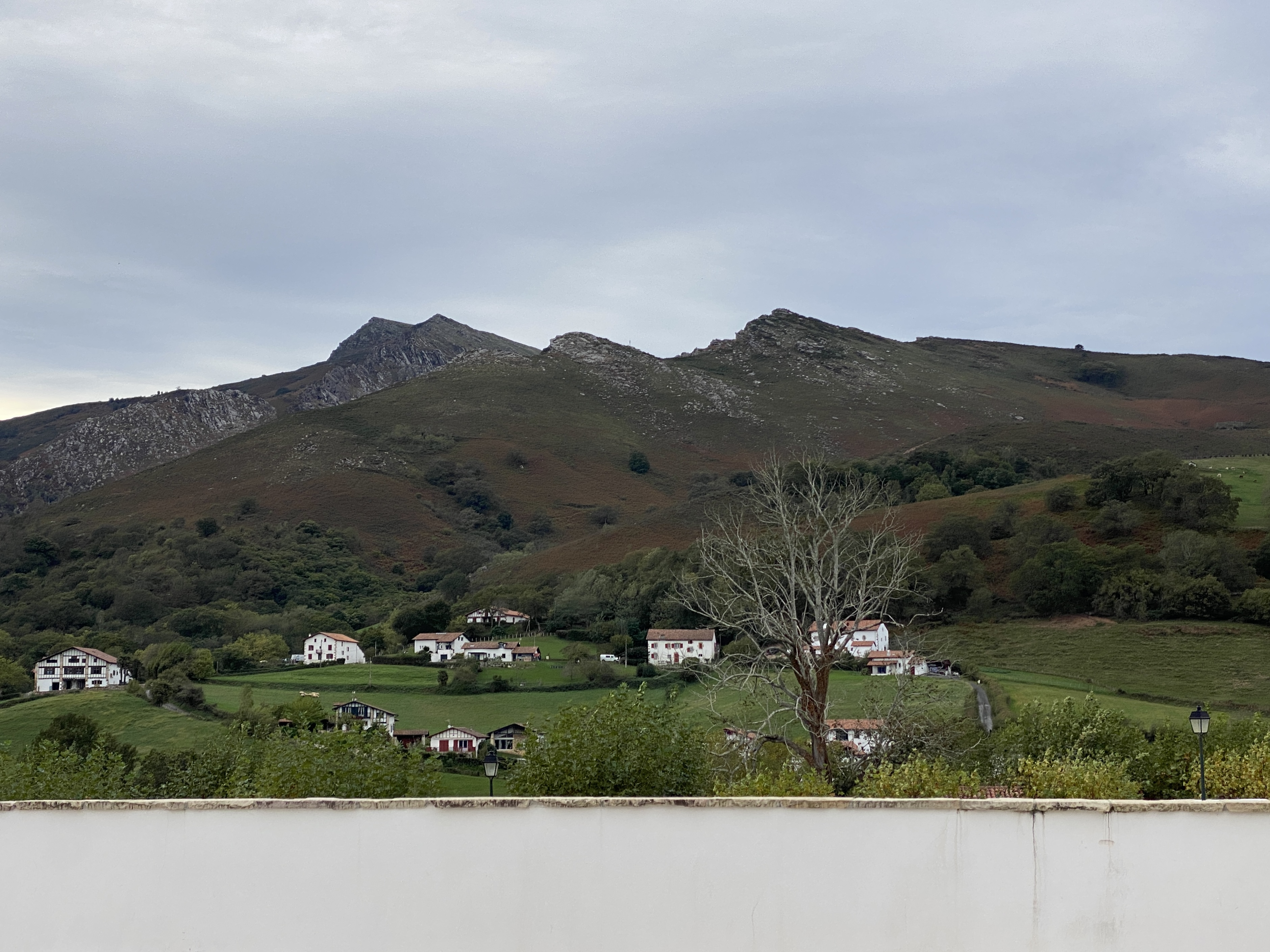While our beach towns tend to be the star of the show, we feel incredibly lucky to have a vast inland valley with many small, charming towns that are truly local and offer visitors a chance to experience the genuine identity of this region. The traditional village squares, half-timbered houses, and artisans of this area are reason enough to make the Basque Country worth visiting.
June 1, 2023 by EMT
While we suggest exploring the French countryside with our guides who can share insider knowledge on these bucolic towns, we recently took a day trip to Xareta, ‘Land of Forests,’ and are eager to let you in on a bit of what we learned, where we stopped, and where we’re headed next.
Ainhoa
After winding along the sea, making our way inland, past enchanted-looking forests and rivers we arrive to our first stop in Xareta, Ainhoa. The town was found in the 13th century as a commercial enclave that welcomed pilgrims on their journey to Santiago de Compostela. While compact in size, it’s one main street lined with old, large 17th century houses painted red and white, that sit against rolling green hills, is unforgettable. Here’s how we kept busy in this town of just 700 inhabitants.
Pierre Oteiza – renowned charcutier whose products come from France’s Pays Basque. Oteiza breeds exceptional meat, you really can’t go wrong anything. Stock up on all the goodies, tinned or not, and a talo, too.
Eglise d’Ainhoa – for its beautiful altarpiece and two-story gallery.
Hawthorn’s Chapel – the 1-hour hike is worth the 360° viewpoint where you can see as far as the Spanish border; the collection of disc-shaped tombstones, called lauburu, are historically interesting, too.
On our next visit, we plan to try Ithurria, where we hear a star chef runs a village gem.

Sare
Back on the road we weave our way through a network of small country roads for 15 minutes, until we arrive to the next postcard-perfect village of Sare. Historically, Sare was an active smuggling hub. Today, the town has a very local (and very safe!) ambience to it and the village itself is centered around the Place du Fronton, where the Basque sport of pelota is played.
We’d done a fair amount of hiking in the morning, and were happy to spend our afternoon wandering from Sare’s main square through the town’s streets that all lead to the edge of the village.
Hotel-Restaurant Arraya – a former coaching inn and worthwhile stop over. The interior is elegant, there’s a lovely patio, too, with a welcoming atmosphere and tasty menu dishing up all things traditional and homemade.
Ortillopitz House – peek into 17th century farm-life in this well-preserved Basque home, with traditional furnishings and unique architecture.
Next time we plan to ride the cog railway, The Petit Train, to the peak of La Rhune. The original cars are made from local chestnut trees and the panorama views are said to be spectacular.
We’re not alone in our appreciation of these villages – both claim a spot on the list of “Most beautiful villages of France” – and are a great starting point to discovering this peaceful and mountainous region.











 Contáctanos
Contáctanos